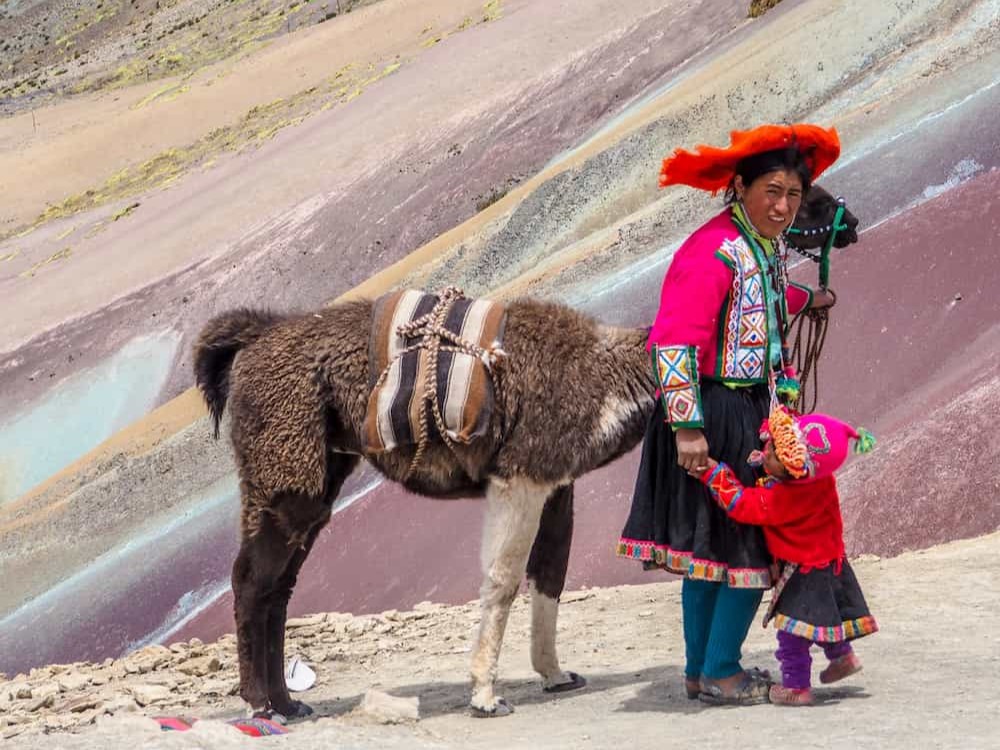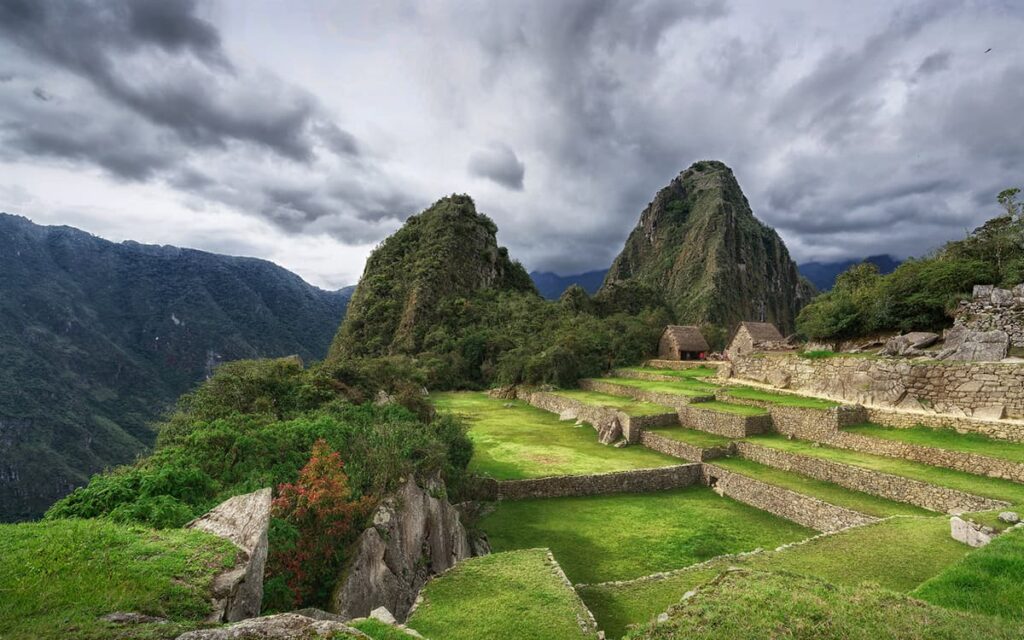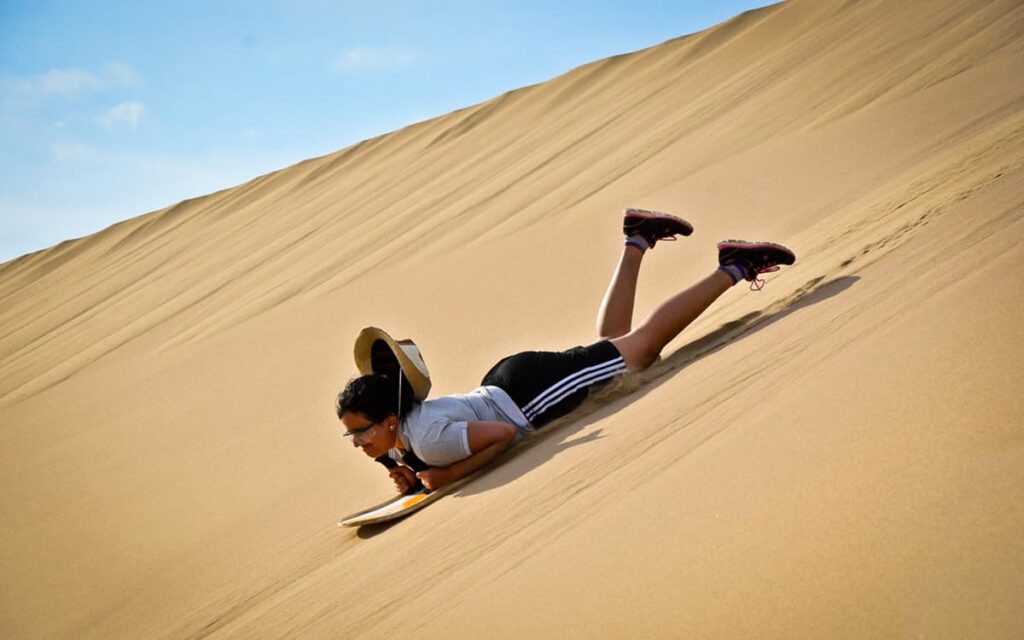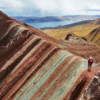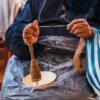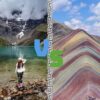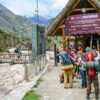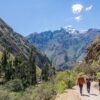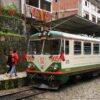It is a district of the province of Quispicanchis about 40 km east of the city of Cusco and 3100 meters above sea level. Its original name was Antawaylla («anta»: copper, «waylla»: meadow), which is translated as «copper meadow», which later it was Spanishized in «Andahuaylas»; but since there is a larger province with the same name in the department of Apurimac, its name was transformed into a diminutive to avoid confusion. Andahuaylillas is a very cozy town, with a rather benign sheltered climate as a result of being surrounded by mountains and on the left bank of the «Vilcanota» river that is called «Urubamba» further down; its lands have a privileged fertility and its people are calm and friendly.
In its extensive Main Square, adorned with «pisonaes» and palm trees is its most valuable jewel: the colonial Andahuaylillas Church, considered the « Sistine Chapel of America«, due to the quality of the art works found in its inside. That church was built on some important Inkan construction, possibly a «Waka» since the bases of the church were made with carved andesites typical of Quechua religious architecture; in turn, in the surroundings there are remains of other Inka constructions, highlighting the transitional architecture portal (transition from Inka to colonial) on the western side of the church with sculptures of two quadrupeds on its lintel. It was the Jesuits who ordered the church to be built in the late sixteenth century, with quite wide adobe walls very common in colonial constructions, its relatively modest architectural structure is classic in the case of village churches. It has only one upper bell tower and a fairly ornate facade with frescoes and two solid outstanding stone columns, between which is the main door with a semicircular arch, on top of which there is a very old balcony behind which there are even more frescoes.
Location
It is located 40 km from the city of Cusco, in the province of Quispicanchi.
Attractions
Andahuaylillas has two great tourist attractions:
The Plaza de Armas of Andahuaylillas
The immense Plaza de Armas is surrounded by lush pisonay trees (or coral trees) and palm trees. It is considered one of the most beautiful squares in the region. A few kilometers from here is the town of Huaro, where it is said sorcerers lived in Inca times. There is a magnificent colonial temple whose mural paintings are by Tadeo Escalante (1803), one of the last teachers of the Cusco School.
The Plaza de Armas is surrounded by pisonay or coral trees and also palm trees. It is one of the most traditional and oldest squares in Cusco. Around the square are artisan shops that show their work, there are also stalls selling products of all kinds.
The San Pedro de Andahuaylillas church
The Andahuaylillas Church was built in the 16th century, which is one of the greatest attractions for local and international travelers. It is considered the Sistine Chapel of America because it contains works of great artistic quality and unique beauty.
The Andahuaylillas Church is located on an esplanade in the square, to enter we must climb some stone stairs that come from stones collected from an Inca settlement near the place. In the upper part there is a balcony (as can be seen in the photo), and in the atrium, three stone crosses with pre-Columbian engravings.
The interior of the church is ornamented with wall paintings, baroque altars, wood carvings and presents beautiful paintings from the Cusco School of Painting, which had its heyday in colonial times. The mural paintings stand out, which show themes related to: good and evil, sin and virtue, heaven and hell, stories from the bible and the saints.
Its structure is beautiful but modest, its interior is impressive. Among the most outstanding is a painting of the Virgin of the Assumption, whose author is the Spanish Esteban Murillo. You can also consider the murals of Luis Riaño and a beautiful oil painting of the archangel San Miguel. In addition, the painting of the Virgin of the Rosary that is in the chapel of has been attributed to Diego Quispe Tito. On the other hand there are various anonymous pictures in the place of impressive beauty
It is also very interesting that the bases of this church are stone blocks from the Inca Palace, previously built in the same place. This was a practice that was repeated during the colonization era, where the Spanish managed to impose their religion over the Andean customs that prevailed in the region.
In fact, the murals of the so-called “Sistine Chapel of America” in Andahuaylillas, which are what has earned it the recognition of Outstanding Monument by the World Monuments Fund, contain religious images that sought to instill Christianity in the Incas. The artist of this great work was the parish priest and linguist Juan Pérez de Bocanegra.
The entrance to the Sistine Chapel of America in Andahuaylillas is from Monday to Sunday from 7:30 to 5:30 pm. The Museum is located next to the church with lithic remains, collections, utensils and mummies. Nearby there are some textile and silver craftsmen.
Place and entrance to the place
Admission for adults is S /. 10 and children and students S /. 5 to enter the Andahuaylillas Temple. The Cusco Tourist Ticket does not include this tour. It is the only route in Valle Sur that is not included in the Full Ticket. General admission is from 7:30 to 5:30 pm. Religious services are held on Tuesdays and Thursdays from 8 am. at 6 pm. and Sundays at 10:30 am. The place does not allow taking pictures.
Be aware. Take into account that taking pictures inside the churches is prohibited, the flashes and lights of the cameras emit heat / light waves, the same that damages the pigments and the paintings themselves. That is why it RESPECTS the rules and regulations of churches and museums, so we can continue to enjoy them for many more years.
How to get to Andahuaylillas on your own
It only takes half a day if you leave Cusco early. First you have to go to the bus terminal that goes to Urcos. Arriving at the Plaza de Armas in Urcos, you take a taxi for 5 soles and take you to the bus stop. And then for 5 soles or a little more they take them to Andahuaylillas. There they walk a little to the Plaza de Armas where the church is.
Then, if you want, you can take a taxi to go to the other two churches that make up the Baroque of the South. The church of Huaro and Canincunca. Finally you end up seeing the Urcos lagoon.
Andean Baroque Route
The Andean Baroque Route, promoted by the Society of Jesus, runs through four temples: that of the Company located in the main square of Cusco, and those of Andahuaylillas, Huaro and Canincunca in the so-called South Valley of Cusco, the geographical space that connects the capital of the Inca Empire with the Madre de Dios jungle and Lake Titicaca. This was a commercial hub, prior to the Incas, where gold, silver, coca and animal fibers circulated. Since then there are signs of that past in the archaeological sites that we find along the route, such as Tipón and Rumicolca and in the old Lucre weaving factory.
The South Valley runs parallel to the Vilcanota River and crosses two lagoons, one of them Huacarpay, a Ramsar site rich in birds, cattails and beautiful sunsets. The valley is made up of small towns of farmers, merchants, and ranchers, and there are also villages of witches, bakers, tile builders, as well as musicians and dancers who pay homage to the Lord of Qoyllurit’i. The temples, carried by the Jesuit fathers, exhibit one of the most impressive and striking Andean Baroque samples in Peru.
The Andean Baroque Route is one of the attractions that you can visit during your trip to Cusco. The time required is half a day and has easy access. In useful info find all the information to plan your visit.
If you visit the city of Cusco another impressive destinations that you can visit are the tour to rainbow mountain peru or the humantay lake tour from cusco, which only takes one day. But if you are gonna to stay more days in Cusco, other archaeological places you can know will be the choquequirao trek peru, the salkantay trek to machu picchu, and the classic inca trail 4 days 3 nights.

